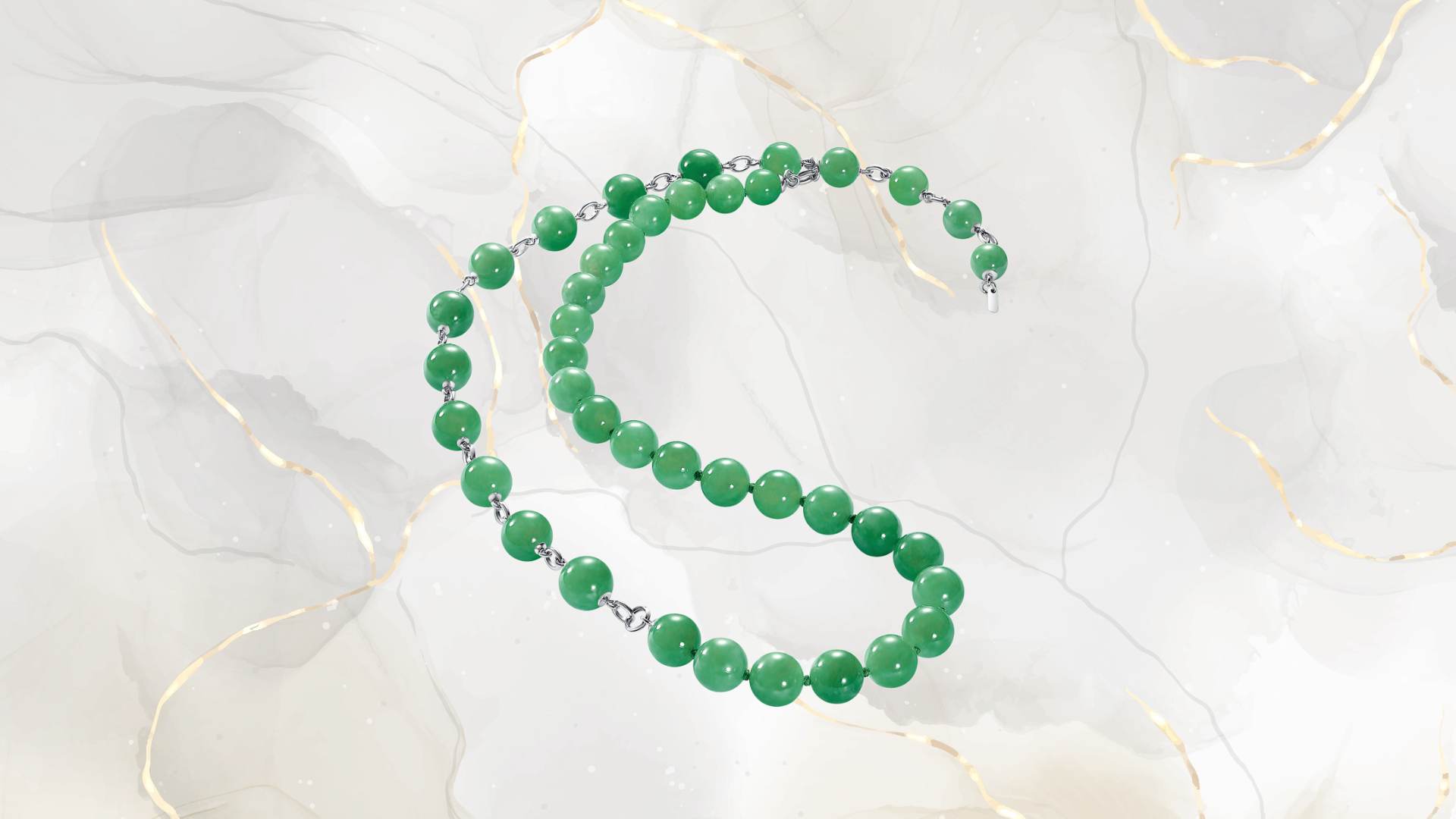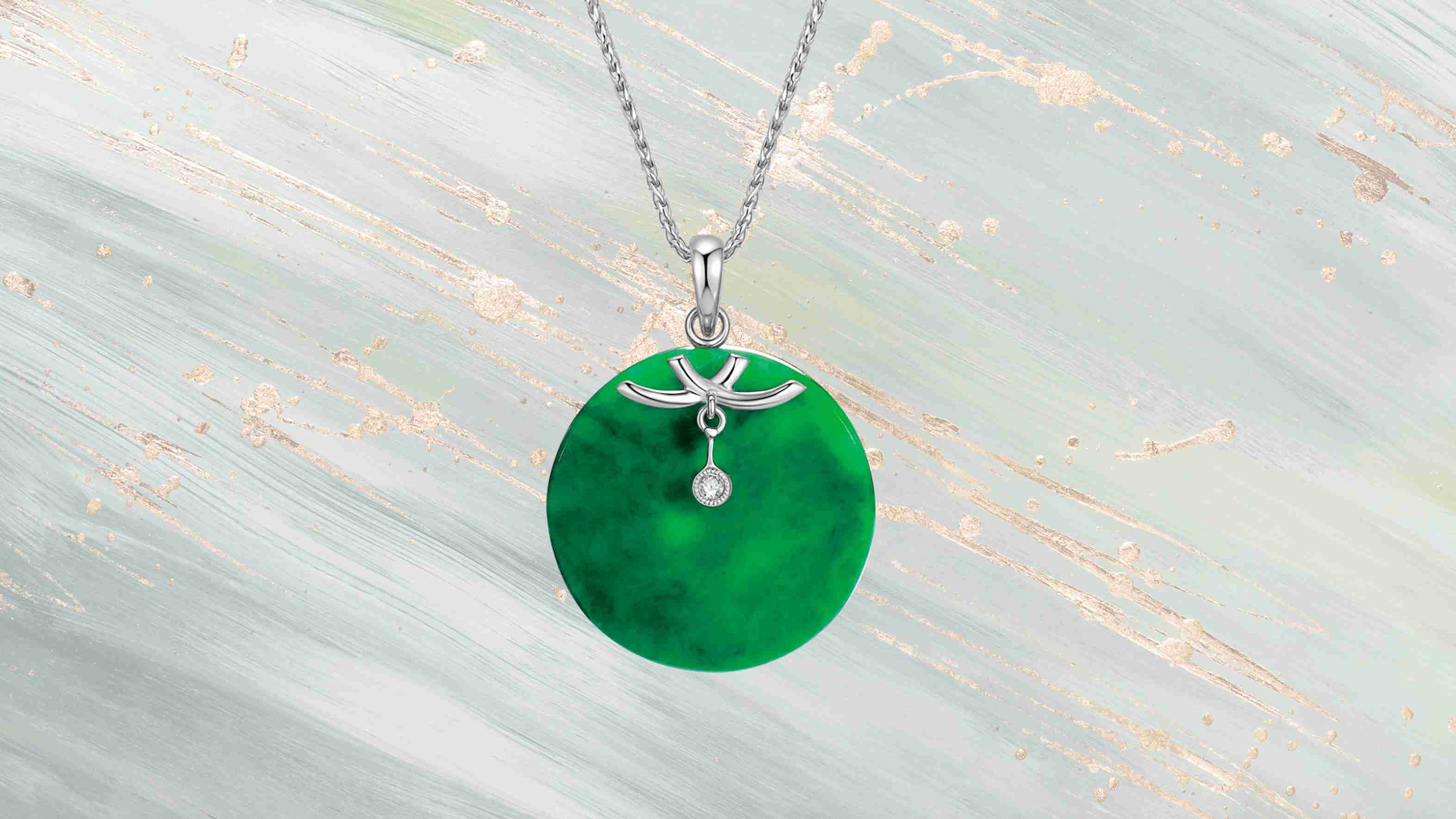Introduction
During the early 1980s, the Hong Kong jade market was flooded with chemically treated and resin impregnated Fei Cui (known as Type B in the industry). It was difficult to distinguish Type B from Type A (Natural Fei Cui) by standard gemmological testing and consumers' confidence was affected. Therefore, the Hong Kong Jewellery & Jade Manufacturers Association (formerly known as the Hong Kong Jade and Stone Manufacturers Association) established the Hong Kong Jade & Stone Laboratory Ltd. (HKJSL) in 1993. Equipped with the most advanced instrumentation, including an infra-red spectrometer, the experienced gemmologists of HKJSL can test Fei Cui accurately and issue authenticated certificates to the public.
Type of Jades
Type A (Natural Fei Cui)
Refers to Natural Fei Cui which has not been subjected to any form of chemical treatment.
Note: To polish Natural Fei Cui with colourless wax, which does not cause any damage to the crystalline structure of the Fei Cui, shall not be classified as a chemical treatment.
Type B (Chemically Treated & Resin Impregnated Fei Cui)
Refers to Fei Cui which has been chemically treated and resin impregnated.
Type C (Dyed Fei Cui)
Refers to Fei Cui which has been treated with dye.
Type B+C (Chemically Treated & Resin Impregnated Dyed Fei Cui)
Refers to Fei Cui which has been chemically treated, resin impregnated and dyed.
Jade Testing
The following two methods are widely deployed by the industry for jade testing and identification:
1. Destructive
There are two kinds of destructive testing used exclusively for academic research:
Controlled heating: Type A can resist heat up to 900 - 1,000'C, while Type B will turn brownish at 400'C. Dissolution: the resin in Type B will loosen its structure and makes it susceptible to dissolution. Soaked in an appropriate solvent, the resin in Type B will gradually decompose and the remaining material will end up in an opaque and clay-like state.
2. Non-Destructive
Employed by laboratories to examine the following criteria:
The physical properties of the tested jade item, such as refractive index, specific gravity. The colour of the tested item. A Chelsea colour filter, spectroscope and microscope will be used to identify and check whether it has been dyed.The presence of resin. Using a ultra-violet light source, specific gravity, microscope and infrared spectrometer to detect whether the tested item contains resin.
Normally laboratories will employ the above 'non-destructive' method to examine the jade items for their clients and then issue certificates. Information on the certificates, as in the case of the Hong Kong Jade & Stone Laboratory, will usually include three sections, namely description, tests and findings, and conclusion.
Description
Shape and cut
Most commonly seen are oval cabochons, bangles, pendants, or fancy shapes and carvings, etc.
Weight
Each piece is weighed on an electronic balance using carat as the unit.
Dimensions
Dimensions (length, width, thickness) are measured using millimetre as the unit.
Transparency
Degree of transparency is graded as follows: 1. Transparent 2. Translucent 3. Opaque
Colour
Colour is measured according to the following standards: 1. Evenness: colour distribution is described as even to uneven, in patches and/or veins and spots. 2. Tone: depth of tone is described from light to dark. 3. Hue: description of colour (e.g. bright green, green, lavender, red, orange, yellow, etc.).
Tests and findings
Polariscope
Detect the item of Fei Cui is anisotropic and polycrystalline.
Refractive index
Average refractive index for Fei Cui ranges from 1.65 to 1.72.
Specific gravity
Average specific gravity range for natural Fei Cui will be 3.25 to 3.50.
Fluorescence
Object will eject visible light, namely long-wave and short-wave ultraviolet light, when subjected to ultraviolet radiation. Most of the natural Fei Cui are inert, The chemically treated Fei Cui will release strong chalky white/blue light.
Visible Spectrum
Natural Fei Cui of bright green colour will show fine chrome lines in the red area of the spectrum, whereas a dyed Fei Cui will show a wide band in the red area.
Magnification
1. By eye:
It is described from fine to coarse.
2. By magnification:
It is described as fibrous or granular or a combination of both.
Chelsea Colour Filter
Helpful in detecting green dye in Fei Cui. The item will appear reddish under this filter. It should be noted that this filter may serve as a reference guide only because it reacts to certain dye substances but not all.
Infrared spectrum
It can be detected that whether the tested Fei Cui has resin or excessive wax. Chemically treated Fei Cui normally contains resin.
Remarks
May include certain remarks like Type A or Type B.
Conclusion
Description
It states the identification of the material and whether it has been treated, The following four categories are classified as Fei Cui:
1. Natural Fei Cui
2. Chemically Treated and Resin impregnated Fei Cui
3. Dyed Fei Cui
4. Chemically Treated, Resin impregnated and Dyed Fei Cui





















